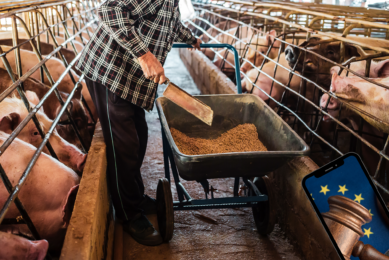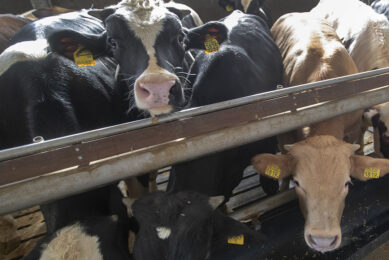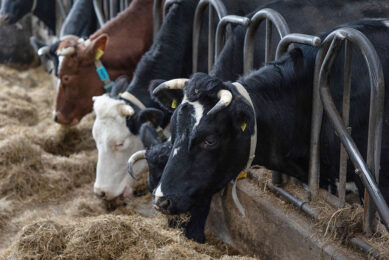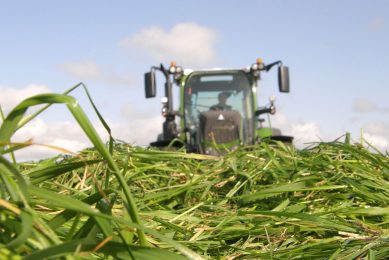Research: Feeding protected lysine and milk production
What is the rumen escape potential of a ruminally protected lysine product (RPL) and what effect has this product on feed intake and digestibility, as well as milk production and composition, of high producing dairy cows?
Increased milk production requires high intakes of crude protein in the diet, and/or improved supply and ratios of amino acids (AAs) delivered to the duodenum in order to meet animal needs for milk and milk protein synthesis.
The experiment was designed as a double (i.e., early and mid lactation dairy cows) 2 × 2 factorial with 28 d experimental periods.
All cows were fed the same total mixed ration (TMR), calculated to be first limiting in lysine, with the treatment pens receiving 17 kg/pen/d of RPL (to deliver 41 g of lysine/cow/d) mixed into the TMR.
Evaluation of the RPL suggested that this feeding level delivered between 9 and 10 g/d of intestinally absorbable lysine.
Results
Feeding the RPL did not influence dry matter intake or milk, true protein and lactose yields. However milk fat yield and concentration decreased, while milk urea N levels increased when RPL was fed.
Blood plasma levels of most AA, except lysine, decreased when RPL was fed, suggesting that lysine was first limiting and that its supplementation led to increased absorption and utilization of other AA.
The lack of response in milk protein synthesis, and the decrease in plasma 3-methylhistidine concentrations, when RPL was fed suggests that muscle protein synthesis may have been stimulated, and/or degradation reduced, with RPL supplementation.
It is possible that lysine had an effect, either directly or indirectly, on muscle protein turnover and energy metabolism that impacted intakes, metabolism and absorption of AA, and milk production, in these high producing cows.
Conclusion
However, based upon the results, use of RPL is not advisable in practice at this time due to potential negative outcomes due to lack of predictability of intestinally absorbable lysine needs.
The full report can be obtained from Elsevier Science











